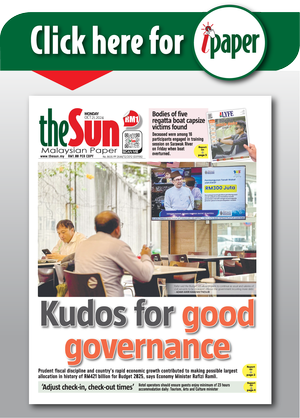I REFER to the article headlined “Organ donations remain low, over 10,000 patients waiting for a chance of life”, published in theSun on Feb 7.
Malaysia records approximately 200,000 deaths annually, and global trends suggest that around 1% of these could be potential organ donors.
This means Malaysia has the capacity for about 4,000 cadaveric kidney transplants per year – enough to clear the current 10,000-person waiting list within just three years.
However, the reality is far different. The waiting period for a kidney transplant in Malaysia is 12 to 15 years, and on average, 22 kidney dialysis patients die every day while waiting for a transplant.
The number of actual cadaveric organ donors remains critically low: just 46 in 2024 (including tissue donations), compared to 82 in the article, 43 in 2023, seven in 2021, 26 in 2020 and 16 in 2019.
Meanwhile, the number of Malaysians on dialysis has surged to 51,000 and is projected to double to 106,000 by 2040.
To reverse this trajectory, we must significantly increase the number of organ pledgers. The current 398,000 registered pledges are insufficient. To create meaningful change, we should target at least three million pledgers, ideally six million.
What is especially alarming is the sharp decline in new pledges: 51,729 in 2022, dropping to 28,363 in 2023, and further down to just 15,304 in 2024.
The situation worsened in January 2025, with only 884 new pledges. This downward trend underscores the urgent need for a fresh, innovative approach, involving collaboration with the private sector and NGOs.
This year marks the 50th anniversary of Malaysia’s first organ transplant, presenting a timely opportunity to reverse this decline.
A nationwide initiative is needed – one that integrates organ donation with solutions addressing other national challenges, such as the low insurance penetration rate (41%).
A staggering 60% of Malaysians lack insurance, leaving many families financially vulnerable. A potential pilot programme could link organ donation pledges with basic funeral coverage, supported through self-pay options or corporate social responsibility sponsorships.
We urge the Health Ministry to embrace bold and collaborative strategies. There is an urgent need to provide hope to the growing number
of dialysis patients and their families.
Beyond saving lives, a successful organ donation initiative also has economic benefits.
Dialysis treatment for 51,000 patients already costs RM2 billion annually, and this figure is expected to double to RM4 billion by 2040.
Studies indicate that increasing organ transplants could lead to RM1 billion in cost savings by 2040.
A concerted effort in conjunction with this historic anniversary could be the turning point in Malaysia’s organ donation landscape. Let us seize this moment to make a difference.
Ravinder Singh









